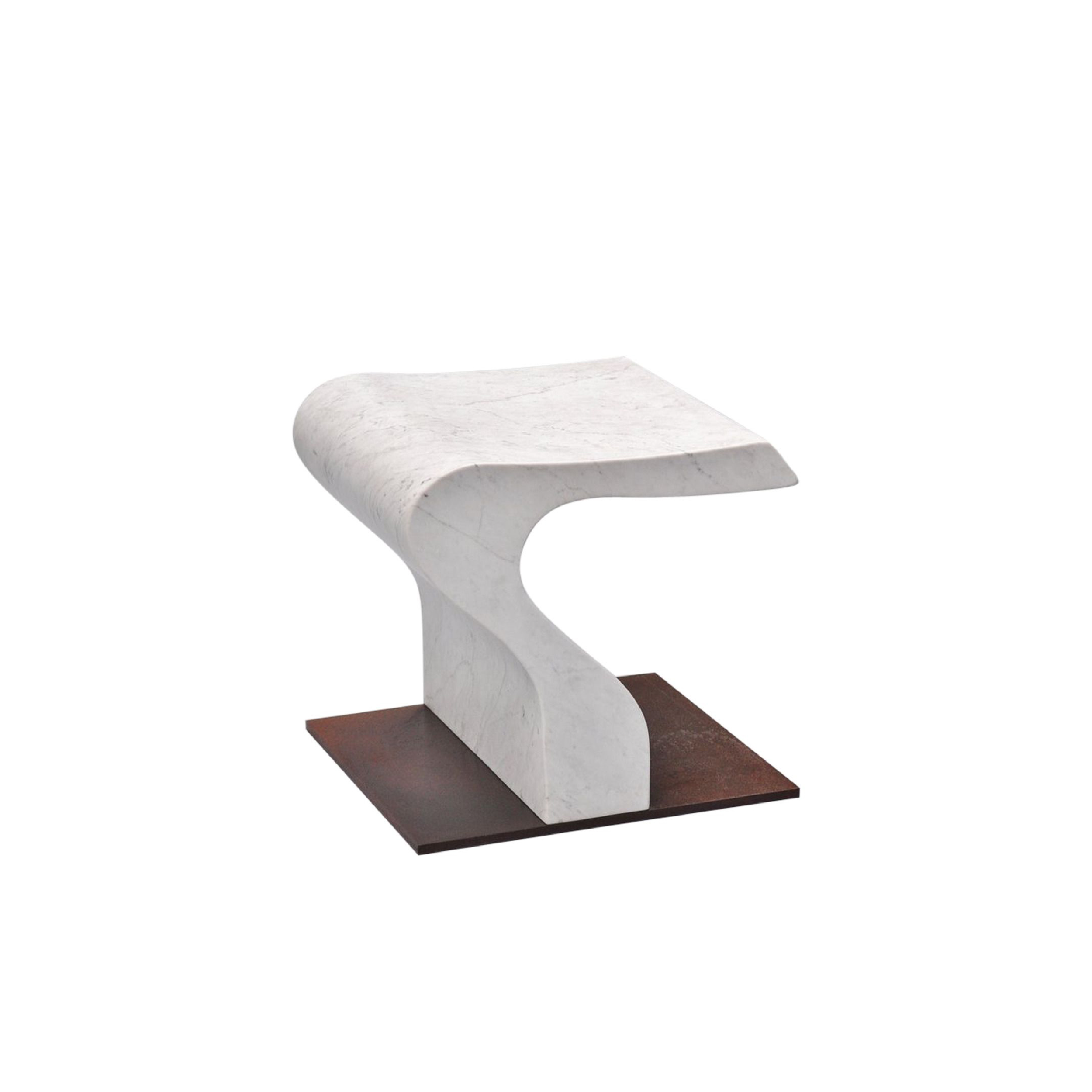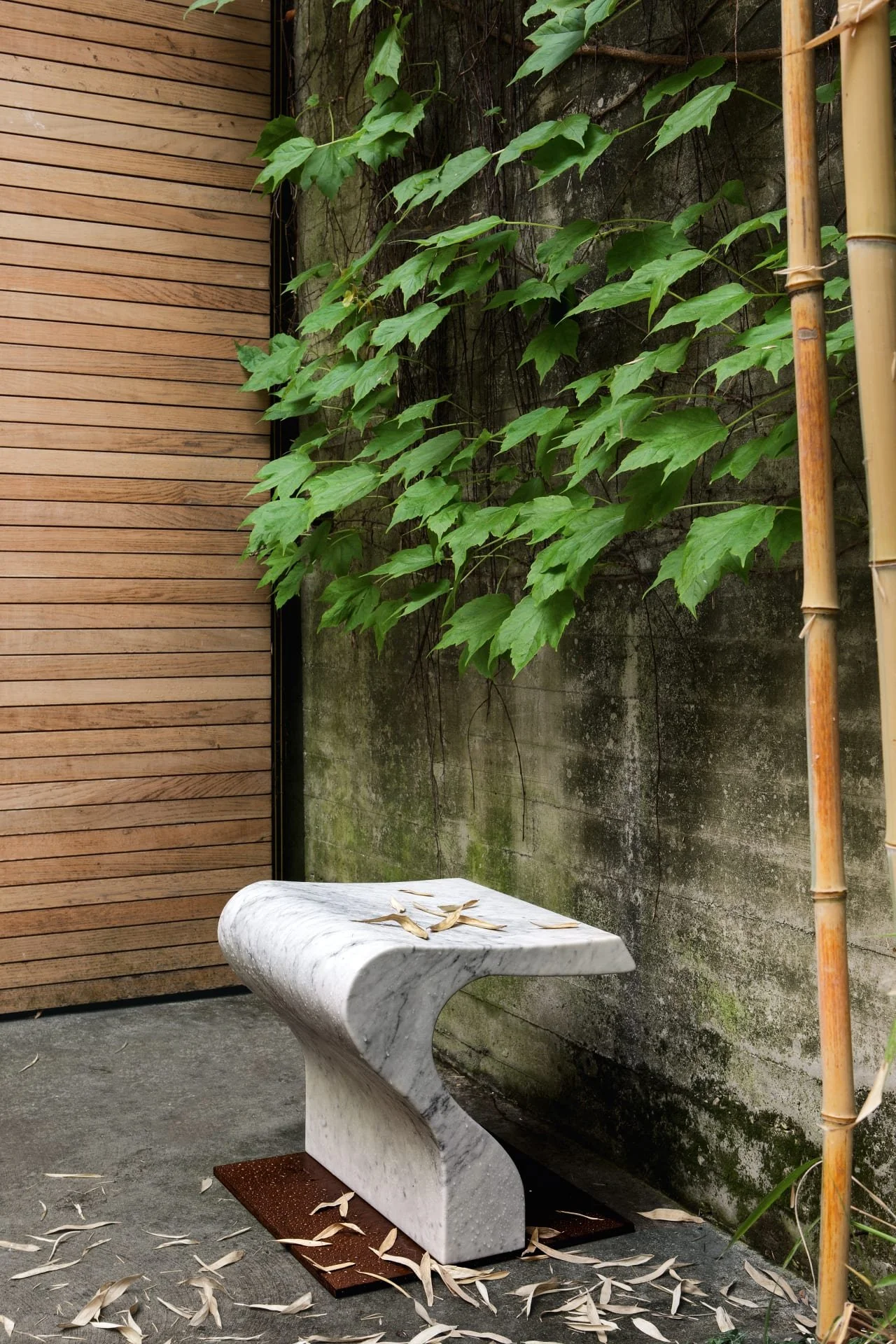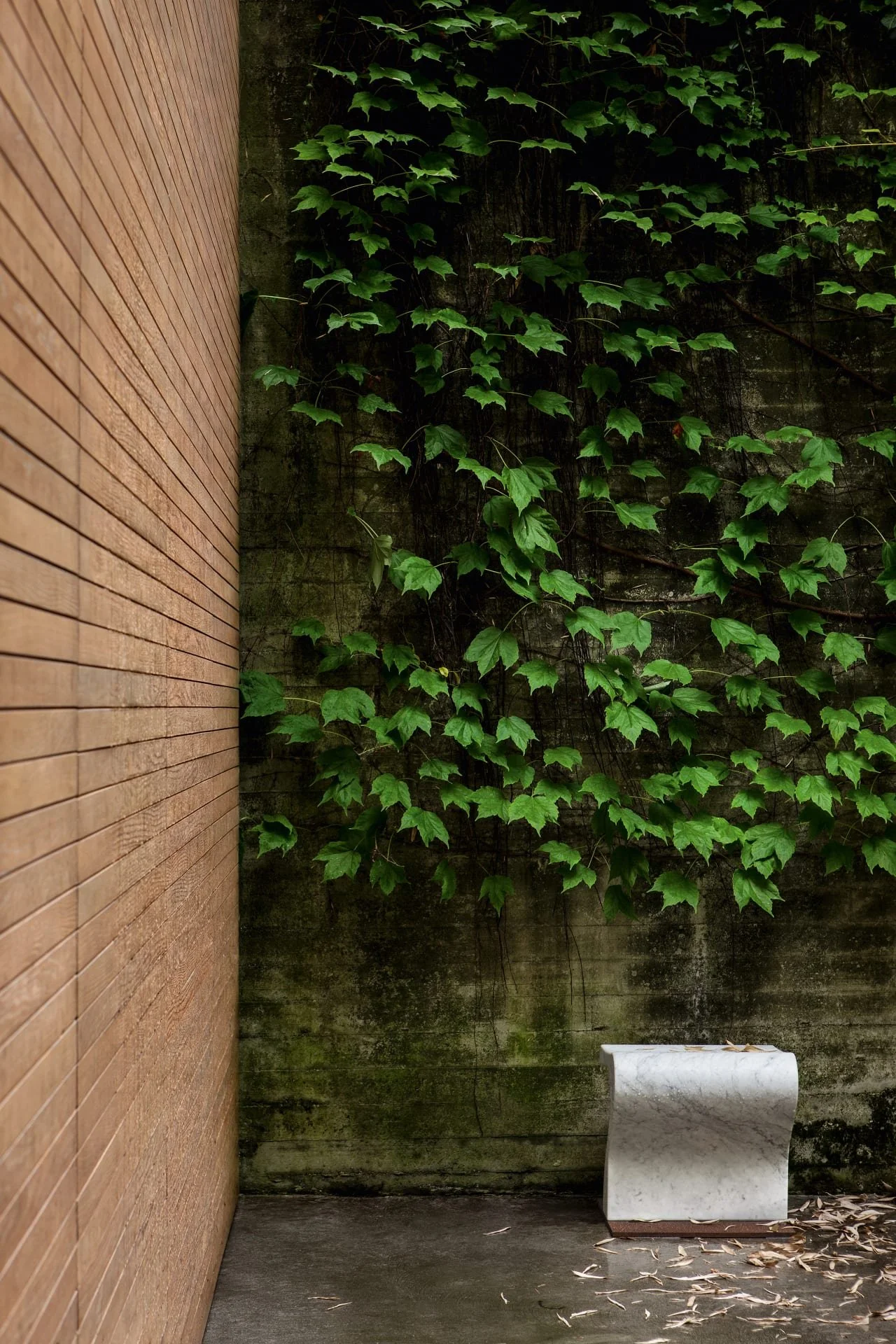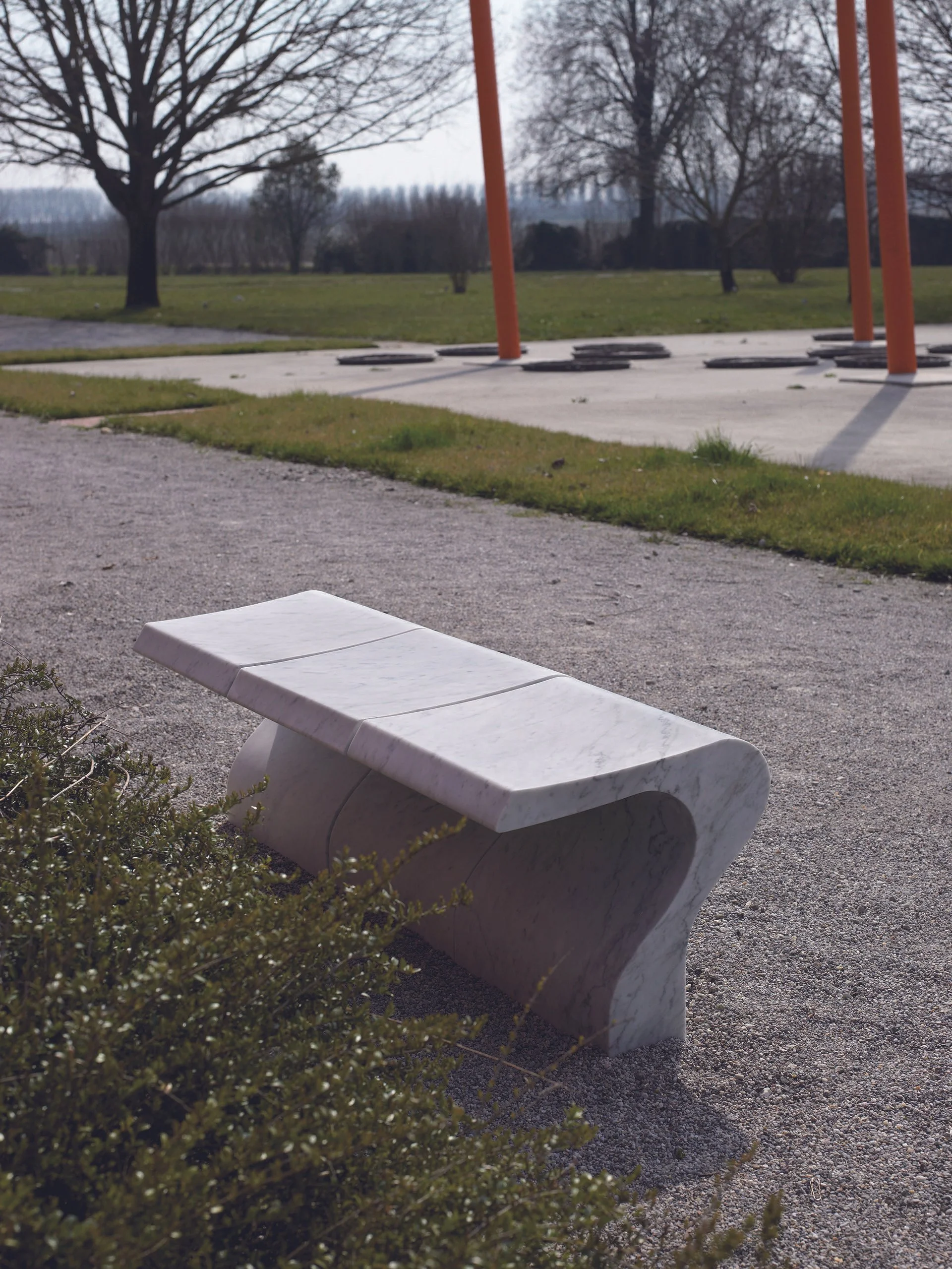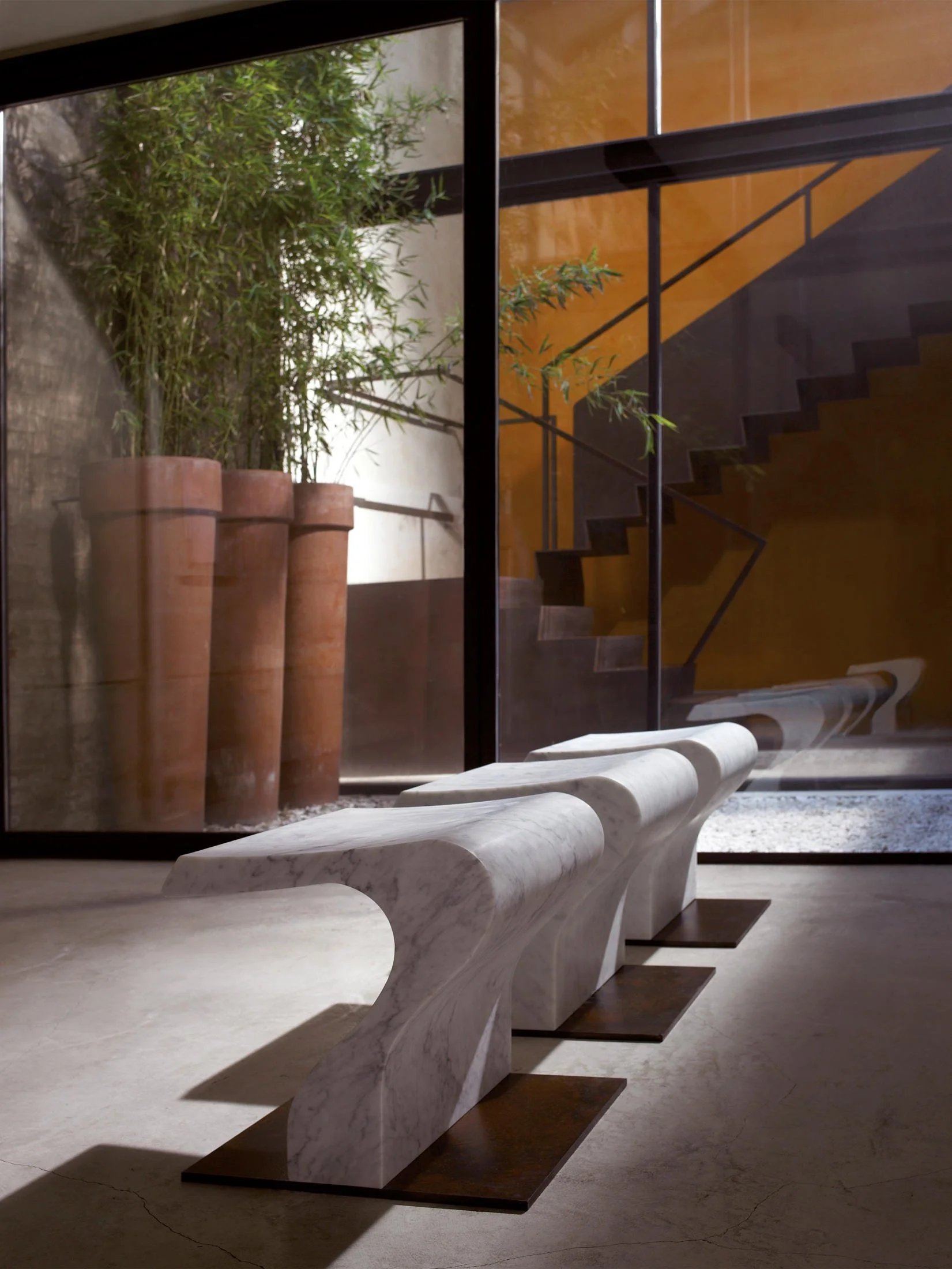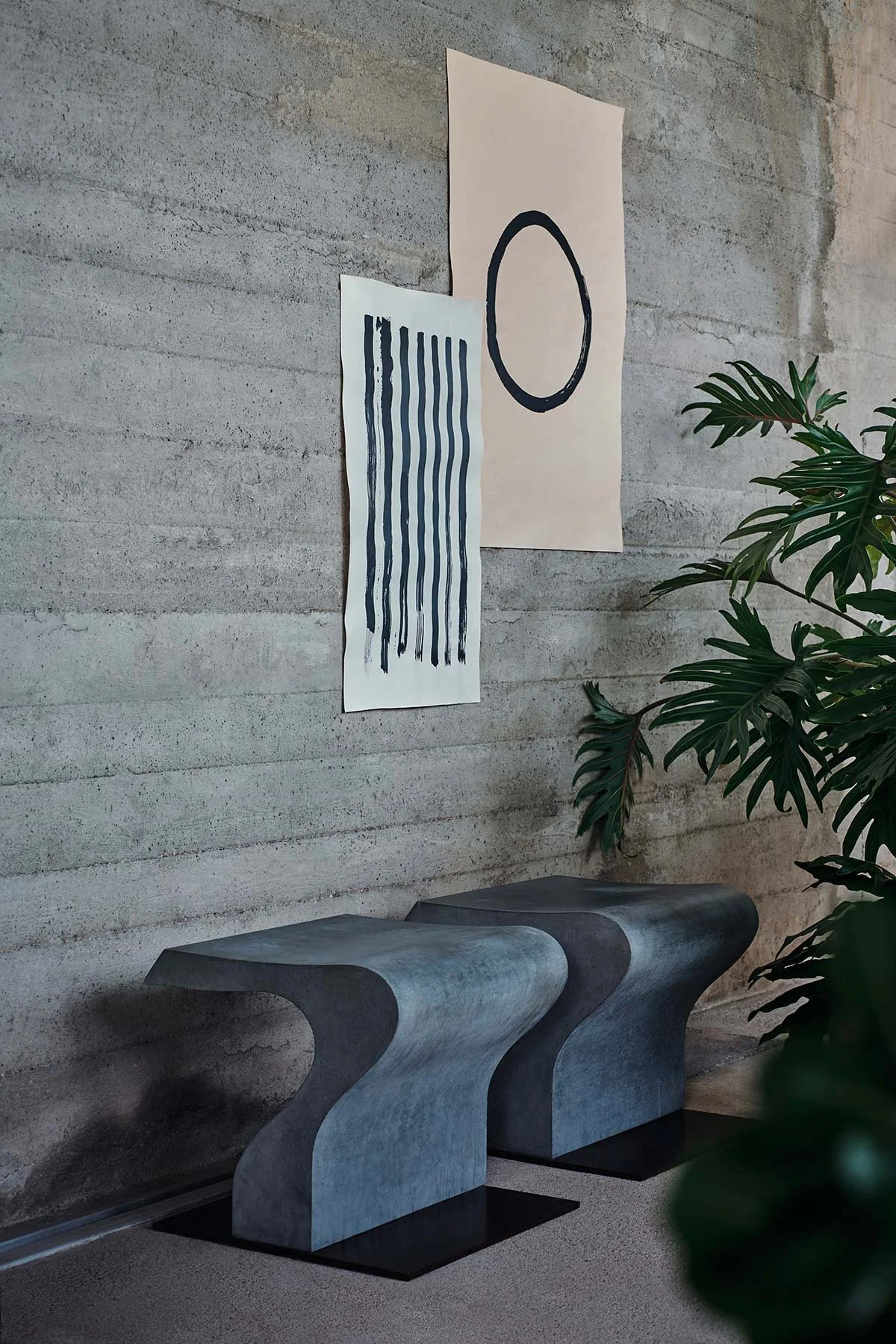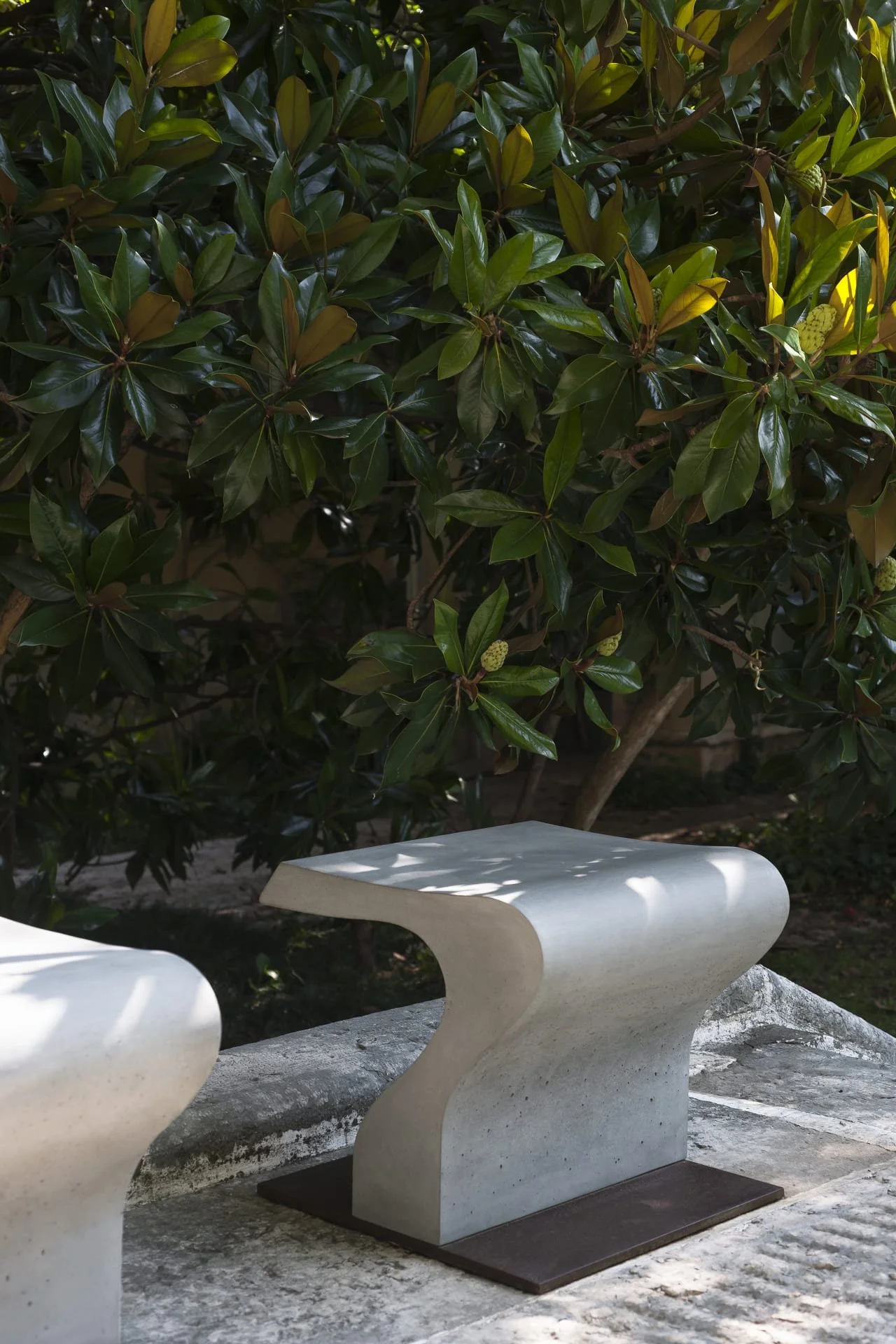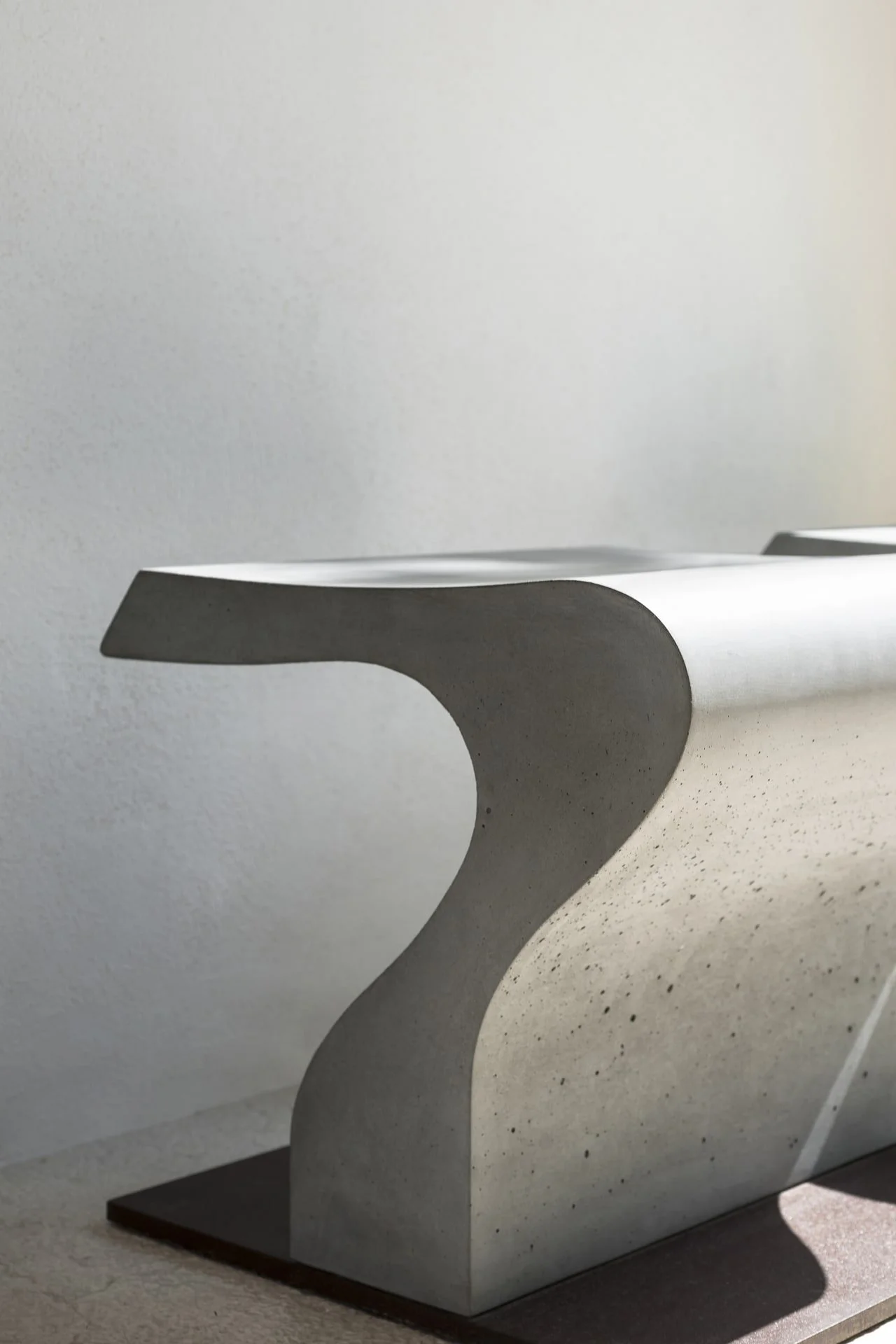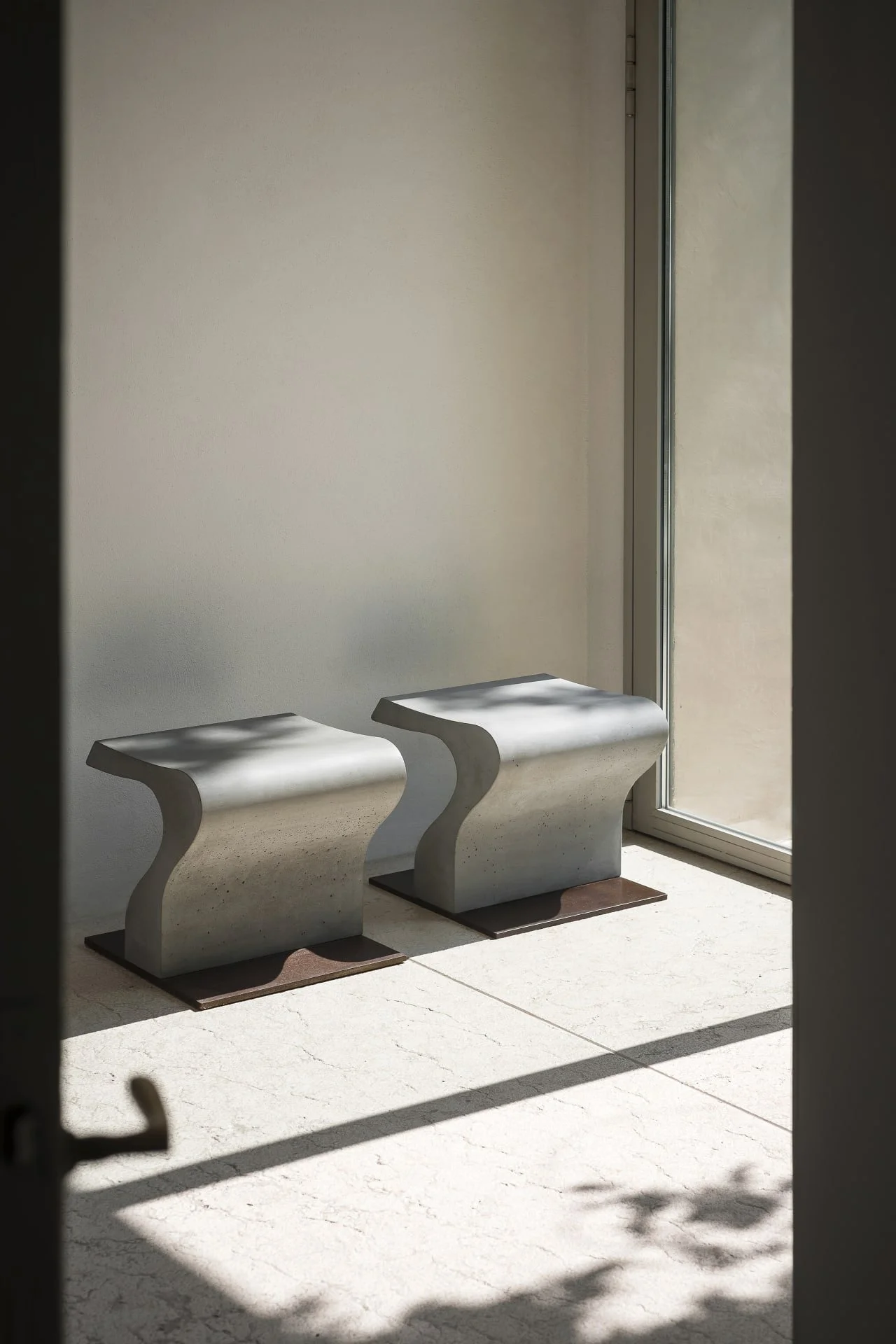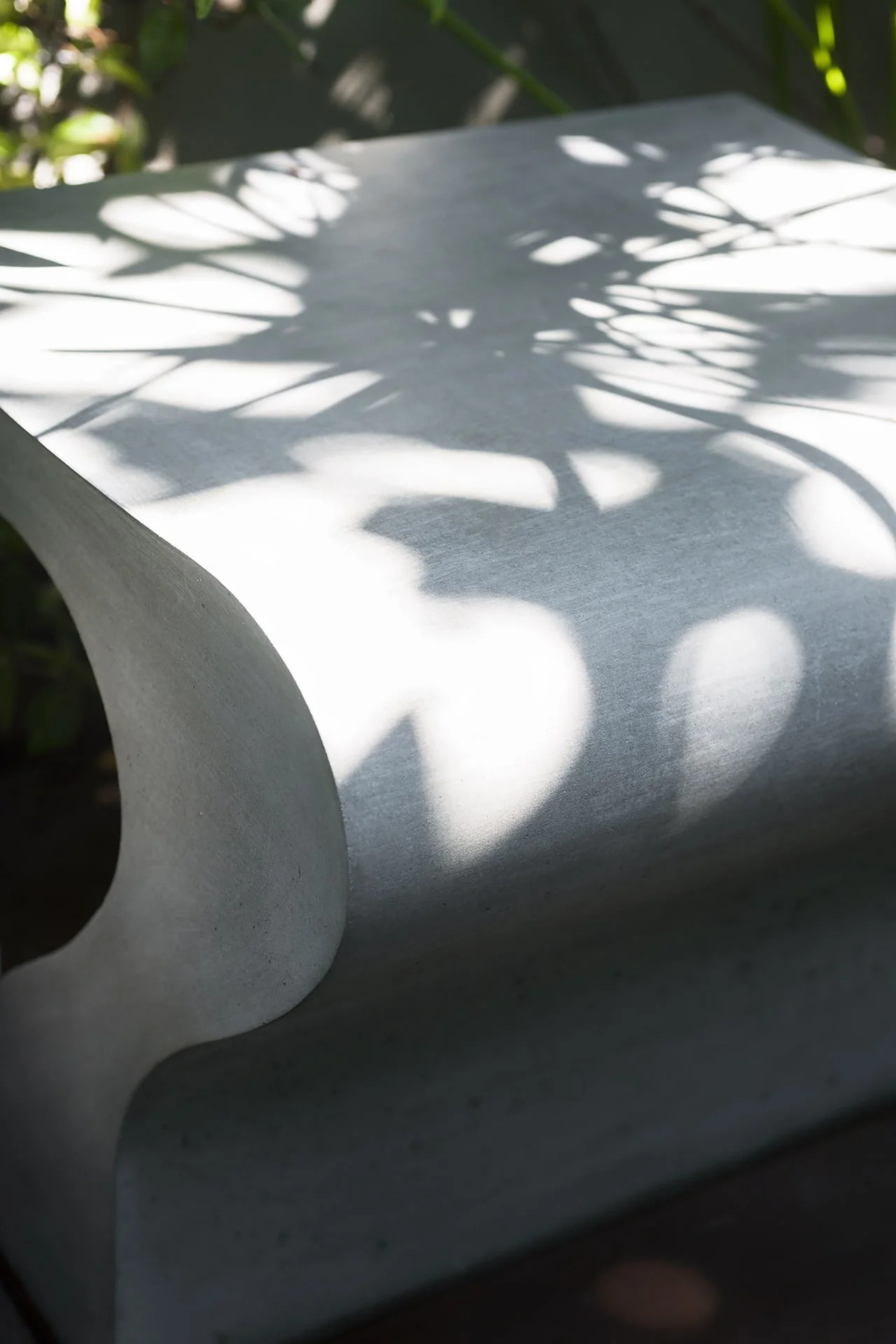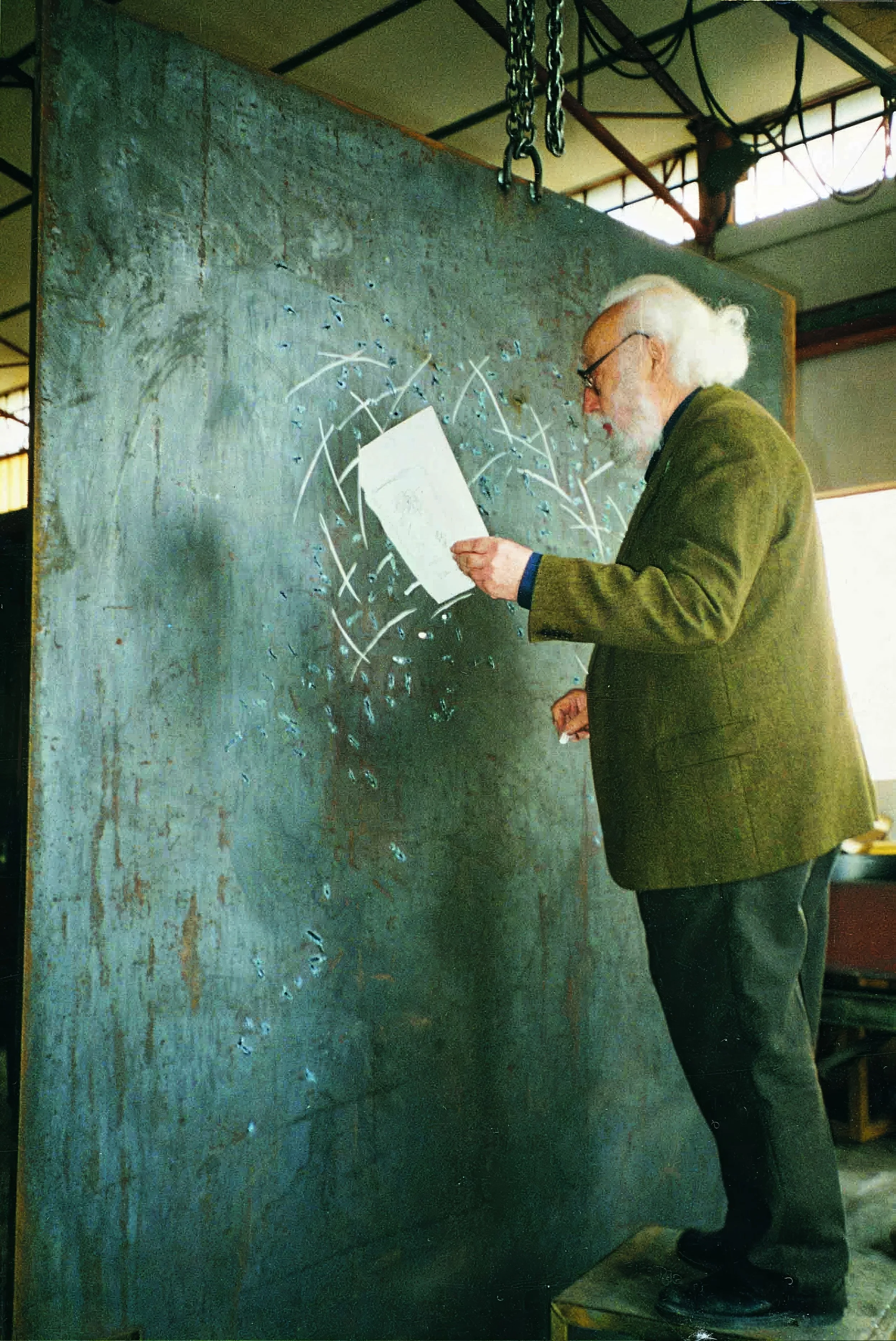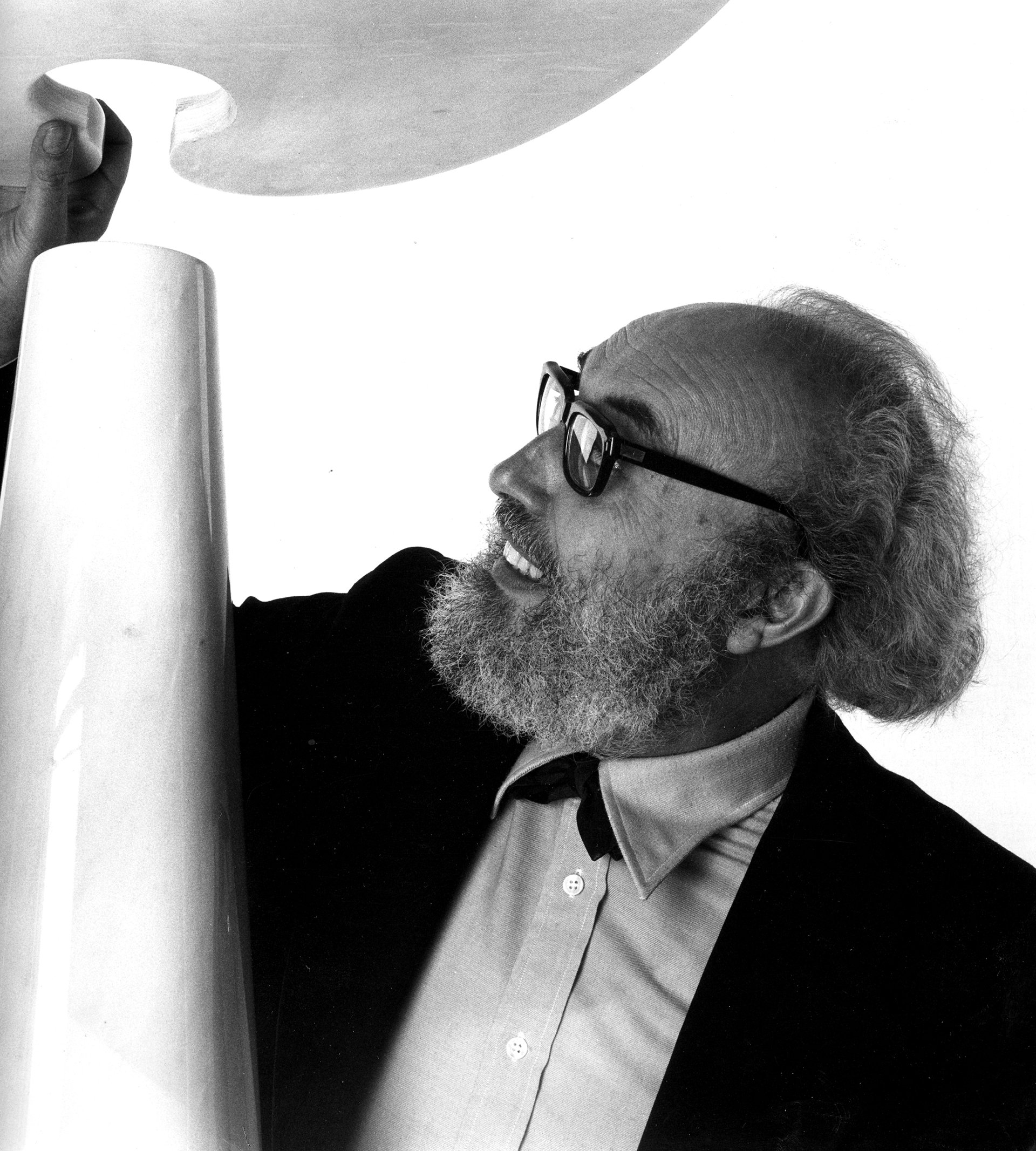A sculpture for sitting on
The Clizia low stool, originally designed by Angelo Mangiarotti in 1990 and in current production by Agapecasa, embodies an innovative exploration of marble’s sculptural and structural potential. Inspired by Mangiarotti’s earlier work “Cono-Cielo” (1987), a marble sculpture created through precision cutting techniques allowing interlocking, stackable elements, Clizia similarly leverages groundbreaking CNC technology. Mangiarotti carefully calibrated a single numerical-control cut through a marble block, creating two complementary stools simultaneously, demonstrating an ingenious approach that significantly minimized material waste.
This method results in a unique interplay: the upper edge of one stool perfectly coincides with the lower edge of its counterpart. Clizia’s cantilevered form and fluid lines challenge traditional perceptions of marble’s rigidity, showcasing the designer’s ability to combine structural innovation with artistic expression.
More than a functional object, Clizia stands as an important chapter in the evolution of contemporary design, illustrating Mangiarotti’s enduring commitment to ethical craftsmanship and creative efficiency. The stool continues to highlight Mangiarotti’s profound respect for materiality and his unique capacity to merge technological precision with sculptural elegance.
Low stool. Marble seat suitable for indoor or outdoor use, made from white Carrara, black Marquina marble or in fiber reinforced concrete with oxidized steel support.
MATERIAL
One of the great names of Twentieth century Italian design, a committed, cultivated and brilliant designer, capable of embracing the ideals of the Modern Movement and going beyond them with his experimental and extremely original designs, Angelo Mangiarotti has succeeded in applying his unique talent to projects of different scales, ranging from architecture to design.
An advocate of rigorous functionalism, he has never neglected the pursuit of elegance and beauty in his work. He pushed beyond conventional boundaries and moved into sculpture with his skillful reflections on plasticity and form, always using contemporary materials and production processes. His approach, and the principles that underlie it, have always been the result of a profound awareness of the importance of values that have an ethical dimension. Angelo Mangiarotti has created his own ‘happiness’ through the ‘correctness’ of his practice, cleverly managing to reconcile the inescapable dualism of ethics and aesthetics.

